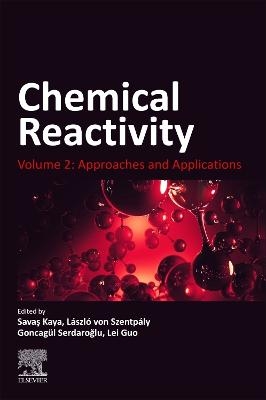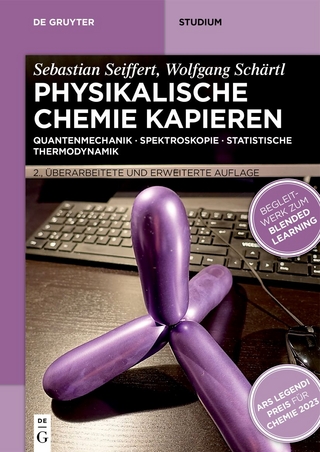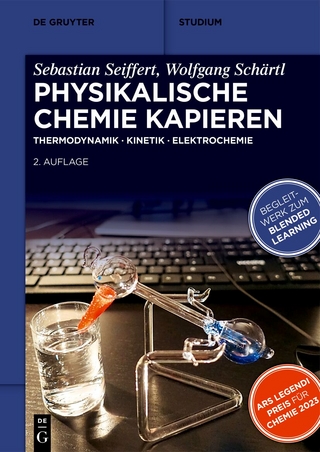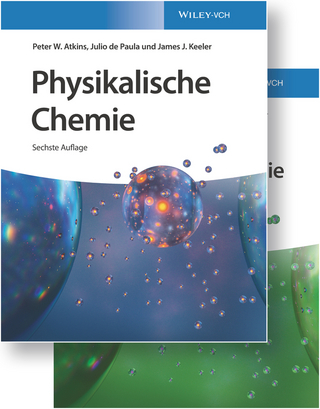
Chemical Reactivity
Elsevier - Health Sciences Division (Verlag)
978-0-323-90259-5 (ISBN)
Following an insightful introduction, the book begins with an overview of conformer searching techniques before progressing to explore numerous different techniques and methods, including confined environments, quantum similarity descriptors, volume-based thermodynamics and polarizability. A unified approach to the rules of aromaticity is followed by methods for assessing interaction energies and the role of electron density for varied different analyses. Algorithms for confirmer searching, partitioning and a whole range of quantum chemical methods are also discussed.
Consolidating the knowledge of a global team of experts in the field, Chemical Reactivity, Volume 2: Approaches and Applications is a useful resource for both students and researchers interested in applying and refining their use of the latest approaches for assessing chemical reactivity in their own work.
Savaş Kaya is associate professor at Sivas Cumhuriyet University, Turkey. His research interests lie in theoretical chemistry, computational chemistry, materials science, corrosion science, physical inorganic chemistry, and coordination chemistry. László von Szentpâly currently works at the Faculty of Chemistry, Universität Stuttgart. A member of American Chemical Society with a good reputation in the field of theoretical chemistry, László’s achievements include research on the valence states interaction model of chemical bonding (VSI model) and molecular modelling of ultimate intercalated carcinogens. He has more than 35 research articles, reviews and book chapters on concepts and applications in Density Functional Theory to his name. Goncagül Serdaroglu obtained her PhD degree from Sivas Cumhuriyet University’s Physical chemistry (Theoretical Chemistry) department and was a post-doctoral fellow with Prof. Joseph Vincent Ortiz (Auburn University, USA). At present, she works at Sivas Cumhuriyet University (Math. and Sci. Edu. Department) as Assistant Professor. Her primary research investigates the chemical reactivity behavior of pharmaceutically important molecules using computational tools. Recently, she has focused on the spectroscopic (IR, NMR, UV) and NLO (nonlinear optic) properties of molecular systems. She has published 30 research papers in key computational theoretical chemistry-related journals Lei Guo received his PhD degree in materials chemistry from the Chongqing university of china. His research is dedicated to synthesis and characterization of organic molecules and their application towards corrosion inhibition property for the protection of metals and alloys from acid corrosion. His interests also encompass theoretical and experimental research in condensed matter physics
1. Applications of the quantum theory of atoms in molecules in chemical reactivity
2. Exploring chemical space with alchemical derivatives
3. Quantum chemical descriptors as a modeling framework for large biological structures
4. Quantum chemical reactivity, mutations, and reality: narrative essay
5. Volume-based thermodynamics approach in the context of solid-state chemical reactivity analysis
6. Predicting reactivity with a general-purpose reactivity indicator
7. Components of density functional reactivity theory-based stabilization energy: descrip
8. Electronegativity equalization principle: new approaches and models for the study of chemical reactivity
9. Electrophilic aromatic substitution: from isolated reactant approaches to chemical reactivity in solvent
10. Lessons from the maximum hardness principle
11. Electron density to analyze acids and bases of Lewis: computational tools
12. Phase modeling of donor–acceptor systems, continuity relations, and resultant entropy/information descriptors
13. Understanding odd-electron halogen bonding in the light of chemical reactivity indices
14. Using conceptual DFT for studies of metal complexes: some interesting examples
15. Noniterative solvation energy method based on atomic charges
16. Chemical reactivity in confined environment
17. Structure prediction using reactivity descriptors
| Erscheinungsdatum | 10.07.2023 |
|---|---|
| Zusatzinfo | Approx. 105 illustrations; Illustrations |
| Verlagsort | Philadelphia |
| Sprache | englisch |
| Maße | 152 x 229 mm |
| Gewicht | 780 g |
| Themenwelt | Naturwissenschaften ► Chemie ► Physikalische Chemie |
| ISBN-10 | 0-323-90259-6 / 0323902596 |
| ISBN-13 | 978-0-323-90259-5 / 9780323902595 |
| Zustand | Neuware |
| Informationen gemäß Produktsicherheitsverordnung (GPSR) | |
| Haben Sie eine Frage zum Produkt? |
aus dem Bereich


